Source: Communication Encyclopedia
Why do semiconductor lasers require narrow linewidth?
At present, with the explosive growth of network traffic demand, the transmission rate of fiber optic communication has been greatly improved. One way to increase the transmission rate is through higher and more complex modulation formats, which require higher linewidth requirements for lasers.
In addition, higher requirements have been put forward for the linewidth of lasers in fields such as spectroscopy, metrology, and biochemical sensing. For example, the linewidth of FMCW lidar must be small enough to ensure that the light reflected back from 200 meters away can also be coherent with the reference light.
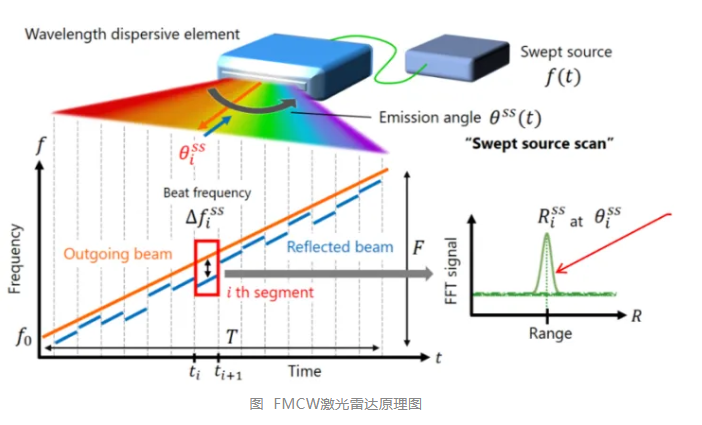
How is the linewidth of semiconductor lasers obtained?
Most discussions on the linewidth theory of semiconductor lasers are based on C.H. Henry's 1982 article "Theory of the Linewidth of Semiconductor Lasers", which provides a detailed account of the factors that affect laser linewidth and proposes a linewidth enhancement factor caused by the coupling effect of field amplitude and field phase. The phase and amplitude will interact with each other, causing the linewidth to widen. The formula for line width is as follows:

In the equation, Vg is the equivalent group velocity, mv is the energy of the laser line, g is the gain of the laser, nsp is the spontaneous emission factor, alpham is the end face loss, Po is the output power of the end face, and alpha is the linewidth enhancement factor.
According to Henry's 1982 theory of linewidth in semiconductor lasers, the linewidth of lasers can be roughly attributed to phase jitter in the optical field. Phase jitter is partly caused by phase changes caused by spontaneous emission, and partly by phase changes caused by changes in light intensity and carrier density. The phase and amplitude of spontaneous emission light will change instantaneously; And the amplitude will in turn affect the magnitude of the phase.
What are the differences between EML and DML lasers?
So, the change in phase can be considered to come from two aspects, one is the change in the phase of spontaneous emission itself; The second reason is that the change in amplitude leads to a change in the phase of the light field.
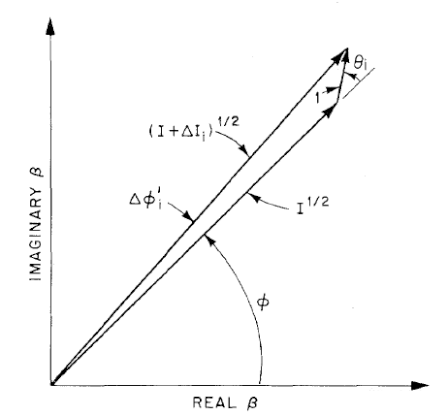
Changes in the complex amplitude of the light field caused by spontaneous emission
The above figure shows the changes in the complex amplitude of the light field caused by spontaneous emission. By using the triangle constructed in the above figure, the phase change of the light field can be deduced using the triangle formula (Formula 1), and the phase change caused by the amplitude change can be deduced using the triangle formula and rate equation (Formula 2)
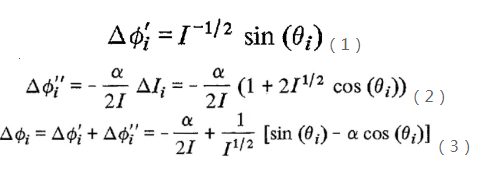
The first term is a constant term, and the second term is linewidth broadening. The expression for Lorentz linewidth is:

The coherence time of TCOH can be expressed as

The change in phase can be obtained by integrating equation (3)
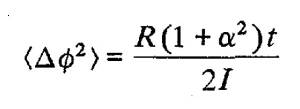
The spontaneous emission rate R is replaced by group velocity, spontaneous emission factor, gain, etc., and the light intensity I is replaced by power P, resulting in the final formula:

Common methods for narrowing the linewidth of lasers
Reducing losses and increasing power are complementary, and according to the formula, it has a narrowing effect on line width. Increasing the lifetime of photons can improve coherence time and narrow linewidth.
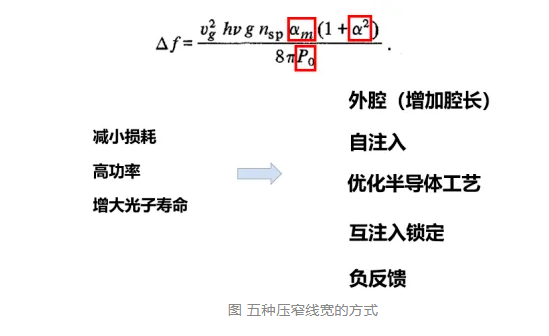
The following provides a detailed introduction to five methods: external cavity, additional external cavity, self injection, negative feedback, and mutual injection locking.
external cavity
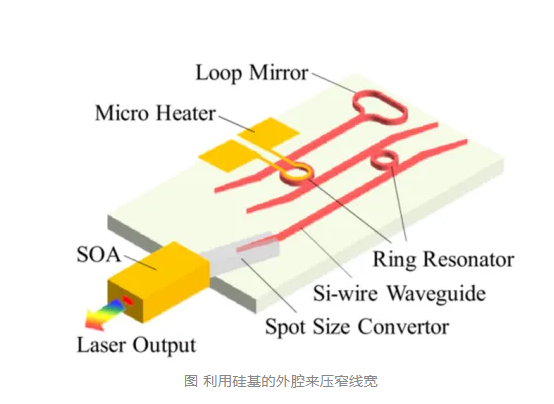
As shown in the above figure, the use of silicon-based external cavities to narrow the linewidth has been quite common recently, as hybrid integration processes are becoming increasingly widely used. There are two advantages to using silicon-based external cavities: first, the loss of silicon-based external cavities is small; Secondly, the external cavity is used to increase the cavity length; Both of these characteristics can be used to narrow the line width.
Increase cavity length
Increasing cavity length is divided into increasing physical cavity length and increasing effective cavity length. Increasing the cavity length has drawbacks and cannot be infinitely increased, as a too long cavity length will result in a close longitudinal mode spacing, which will increase the requirements for the filter.
The physical cavity length is to increase the length of the waveguide inside the cavity, as shown in Figure 5. The physical cavity length set by Eindhoven University of Technology is increased, and the tuning range is expanded through two rings composed of MMI and waveguide for filtering and cursor effect. There is also an asymmetric MZI filter on top.
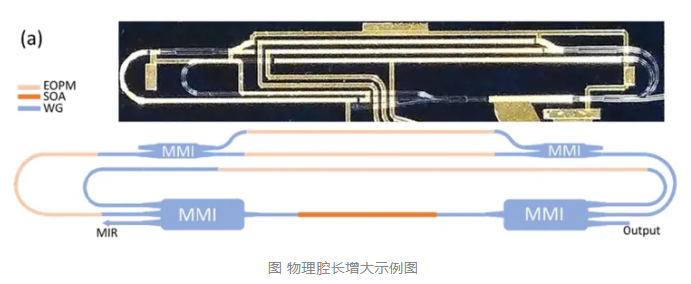
The effective cavity length is generally achieved through a high-Q ring, and the effective cavity length can be controlled by controlling the coupling coefficient between the ring and the straight waveguide. The above figure<Using a silicon-based external cavity to narrow the linewidth>increases the effective cavity length.
self-injection
Self injection refers to the further stimulated radiation of laser output from the laser, which is reflected by the external cavity and injected into the resonant cavity again. The carriers inside the cavity change, resulting in a decrease in the gain of other modes, an increase in the gain of the feedback mode, and a significant increase in the intensity gain, suppressing other modes. The difference between it and the first external cavity method is that the external cavity of the first method is part of the resonant cavity, while the external cavity here is not.
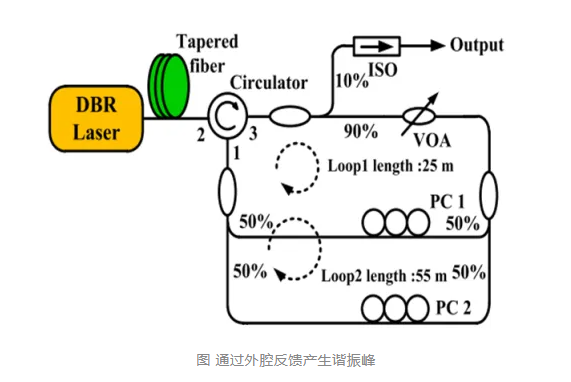
As shown in the above figure, due to the fact that external cavity feedback also generates some resonance peaks, the cursor effect generated by two loops is used to suppress these resonance peaks.
negative feedback
No need for a high-Q cavity, only one filter is needed. This method requires the working point to be on the rising edge of its filter reflection spectrum, as shown in Figure (b). The formation of negative feedback is shown in the rightmost figure. If the frequency increases, the reflectivity increases, the photon concentration in the DFB cavity increases, and the carrier concentration in the DFB cavity decreases. Due to the plasma effect, the refractive index increases, and the emission frequency decreases.
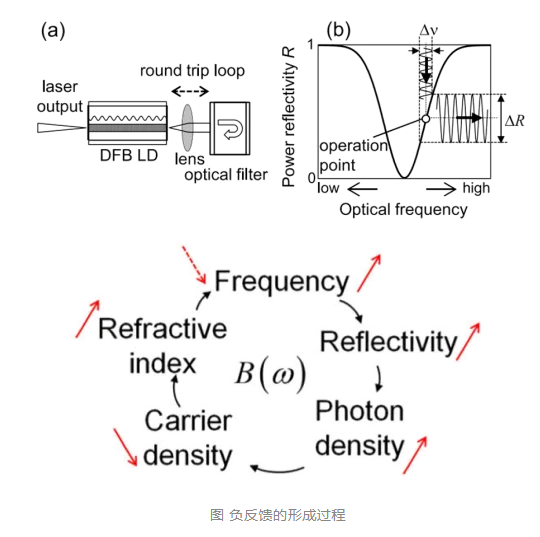
Mutual injection locking
This method, as shown in the figure below, consists of two DFBs without isolators, one optical attenuator, two 1 * 2 power dividers, and two optical isolators. Among them, the fiber link delay between the two lasers is 10 ns. The coupling efficiency is adjusted by an optical attenuator, and frequency noise is measured at ports 1 and 2. Fix the current of one laser and adjust the current and coupling strength of the other laser to find the MIL mode.

Disclaimer: This article is reproduced or adapted online, and the copyright belongs to the original author. The content of the article is the author's personal opinion. Reproduction is only intended to convey a different viewpoint and does not represent the company's endorsement or support of that viewpoint. If you have any objections, please feel free to contact us.